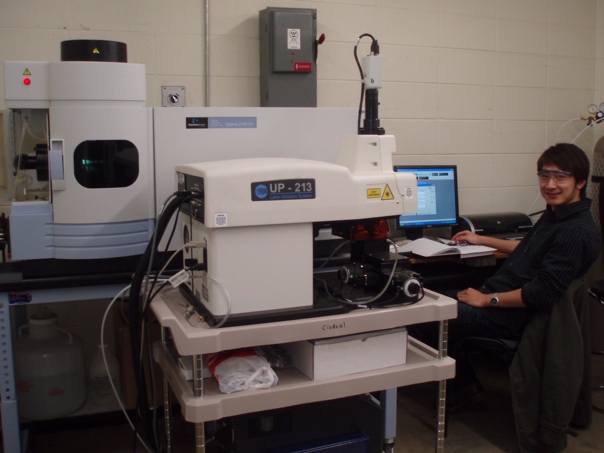Laser Ablation ICP-MS
Laser ablation is a solid sample introduction device which uses a laser beam to vaporize and ablate a solid sample. The material injected into the laser ablation chamber is swept into the ICP-MS for elemental and isotopic analyses. The advantages are spatially resolved data down to a few microns in diameter, the ability to do depth profiling, lower potential for contamination, and speed of analysis (little or no sample preparation is required). The disadvantages are typically higher detection limits and the lack of matrix matched standards which can hinder accuracy. In our lab we feature the UP-213 from New Wave. Details of this unit are available via the brochure link on this page.
Those new to laser ablation are encouraged to contact us with your questions and to take a look at the following papers (and references therein).
Kym E. Jarvis and John G. Williams, “Laser ablation inductively coupled plasma mass spectrometry (LA-ICP-MS): a rapid technique for the direct, quantitative determination of major, trace and rare-earth elements in geological samples”, Chemical Geology, 106 (1993) 251 -262
Bodo Hattendorf, Christopher Latkoczy, Detlef Gunther, “Laser Ablation-ICPMS”, Analytical Chemistry, 341A-347A
 Director James V. Cizdziel, Assistant Professor
Director James V. Cizdziel, Assistant Professor
Department of Chemistry and Biochemistry
333 Coulter Hall
P.O. Box 1848
University, MS 38677-1448
Office: (662)915-1814 | Fax: (662)915-7300
cizdziel@ olemiss.edu
